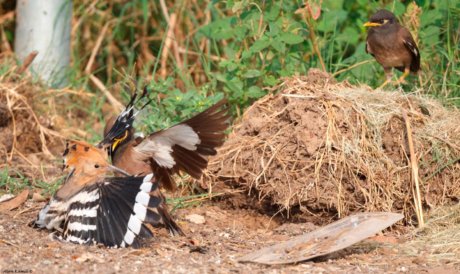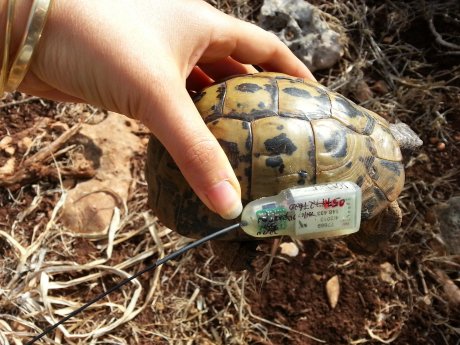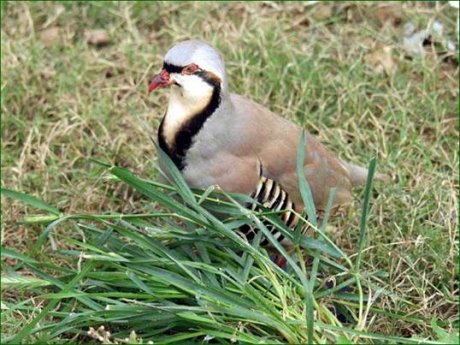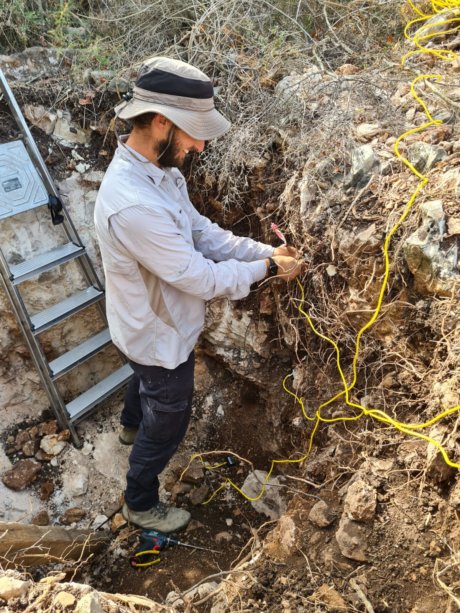

Mitigation of common myna abundance in protected areas
Eli Finarov, Assaf Shwartz, Uri Roll, Shay Meiri
The common myna is a songbird belonging to the starling family (Sturnidae) that reached Israel as an exotic bird and escaped from the “Tzapari” in Tel Aviv in 1997. The myna is an invasive bird in many countries around the world, and has been declared one of the 100 most globally destructive invasi...

Dealing with the Little Fire Ant at Ramat Hanadiv: Mapping, Treatment and Monitoring
The little fire ant is a tiny, red ant, active day and night, which stings humans and their pets and displaces other arthropods. It causes severe harm to the ecosystem and constitutes a severe hazard to humans. In 2018, the little fire ant reached Ramat Hanadiv and spread rapidly throughout the Memorial Gardens, impacting significantly on local art...

Proliferation and spread of an alien species – Tetraclinis articulata (Vahl) Mast., in Mediterranean woodland in Israel
Ken Karu
Tetraclinis articulata (Vahl) Masters is a Mediterranean coniferous species. T. articulata was selected as one of the most promising species, mainly because of its high drought resistance. The propagation and spread of

Visual models as predictive, science‑based tools for assessing future ecological landscapes:
Liat Hadar, Yagil Osem, avi perevolotsky, Jochen Mulder, Agnes Kirchhoff, Daniel Orenstein, yohay Carmel
Socially driven landscape changes strongly influence the landscape’s aesthetic qualities and functionality, hence most decisions,

Impact of Grazing on Reptiles in Mediterranean Woodland in Israel
Roy Talbi, Ido Itzhaki and Avi Bar Massada
The study focuses on the effects of cattle grazing on the reptile community in Mediterranean woodlands in northern Israel, through the changes in vegetation structure and the presence of the cattle egret (Bubulcus ibis), a predator that accompanies cattle in the field. The study sheds light on the role of...

The effects of hunting and landscape structure on wild boar behavior, social structure and physiology in urban, agricultural and natural areas in Israel
Achiad Davidson
In recent years, in Israel and in many places in the world, wild boar (Sus scrofa) have expanded their geographical distribution to new areas

Growing Willows in Treated Wastewater as Healthy Forage for Animals
Hussein Maklada, Yan Landau, Efraim Levinson, Amnon Schwartz
In the ancient Jewish texts it is considered to lack both taste and smell, but it seems that some find the willow to be both tasty and nutritious, and if this is not enough, it fulfils a central role in an innovative Israeli-Jordanian study

“Circle of life” of the species Testudo graeca in Israel
Mai Bernheim
Reptiles are one of the more susceptible groups to suffer from biodiversity loss as a result of human-induced changes in the environment, such as global climate change. There is solid evidence for the influence of global warming on species biology such as range-boundary changes and phenological shifts

Regeneration and mortality of woody species in the Mediterranean landscape
Danielle Bashan and Avi Bar-Massada
Regeneration and mortality of woody species in the Mediterranean landscape - Effect of interface treatments, competition and environmental conditions.

The interrelationship between vegetation and air‑pollution
Ozone is the most prevalent and damaging air pollutant to affect natural vegetation, forests and crops (Global economic loss associated with ozone damage to crops is currently estimated to be $11-26 billion annually; Mills and Harmens, 2011). During the industrial age, anthropogenic emissions of fossil fuel have acted to approximately double the gl...

The effect of Aleppo pine (Pinus halepensis) invasion on nests predation
Asaf Ben David, Tamar Dayan, Ido Itzhaki
The invasion of pine (Pinus Halepensis) to the Mediterranean scrubland and natural woodland, changes the composition and height of the vegetation. These changes may alter the movement of predators and thus increase predation pressure on prey.

Long‑term Monitoring of Gazelles and Partridges
Amir Arnon, Bill Woodley, Hila Shamoon and Liat Hadar
The mountain gazelle (Gazella gazella) and the chukar partridge (Alectoris chukar) are used as bio-indicators sensitive to changes in the composition of their shrubby (garrigue) environment and the landscape

Long term monitoring of water balance in the nature park
Yagil Osem, Volcani Center and the Weizmann Institute
The study deals with how the rainfall regime dictates the structure, function, and stability of natural and man-made ecosystems in Israel and the applied implications for management in changing climatic conditions.
Any question? We will be glad to help
Of further interest...
Accessibility
An accessible trail through the Nature Park
In the Nature Park at Ramat Hanadiv there are a number of spectacular hiking routes.
Sustainability
Establishment of the Partnership for Regional Sustainability
In 2015, Ramat Hanadiv established the Partnership for Regional Sustainability, aiming to combine forces for the quality of life in the region.
Dining Here
Dining-Kiosk
Refresh yourself at the Kiosk with a drink or snack. The kiosk is open daily.

